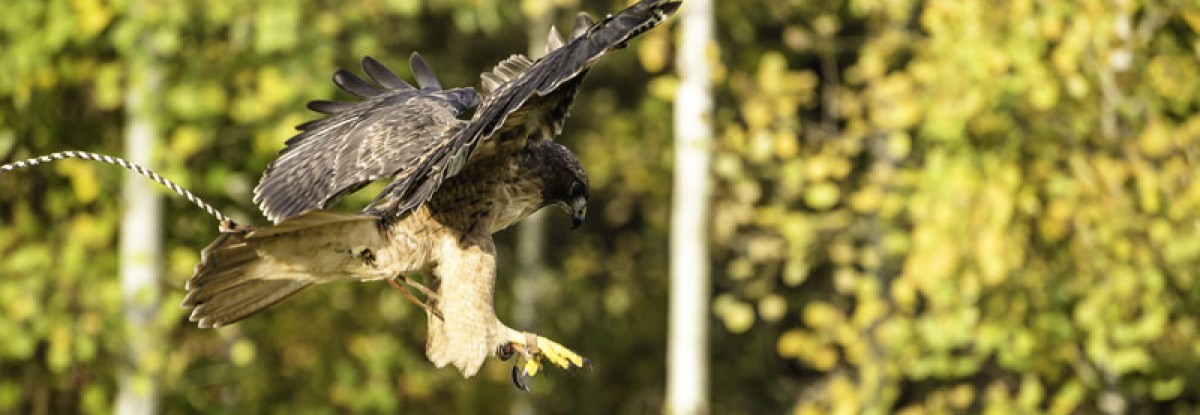The thought of a skunk might elicit an immediate response for most people – plug your nose! But is that really all there is to it? Some of what we think we know about skunks stems from what we see portrayed in the media. Or perhaps you’ve experienced an unlucky encounter with a skunk who felt threatened and sprayed you (or your pet!)
You might be surprised to learn that skunks are relatively mild-tempered and do not tend to spray unless they feel threatened – and even then, they give us ample warning beforehand.
Have you ever wondered how we handle caring for skunks at our rehabilitation center? Our Wednesday PM shift leader, Cherie MacDougall, tells us about a time when she brought orphaned skunk kits to the clinic. Along the way, she’s learned a lot about skunks!
“I had only been volunteering for Chintimini Wildlife Center for a few months when I answered a call for help. A litter of Striped skunks had been orphaned and a local homeowner was able to safely and humanely trap them. I arrived on the scene with images of cartoon skunks and tubs of tomato juice running through my head. Exiting my vehicle, I cautiously sniffed the air expecting the pungent, overwhelming, distinctive smell of skunk. To my surprise all I smelled was a faint rotten egg odor. I would later learn that skunks produce their infamous smell from a highly specialized anal scent gland that develops as the skunk matures. Following my nose and the homeowner’s directions I found the skunk kits. They were immediately identifiable by their black fur, white stripes, and bushy tails.
As I carefully reached in with gloved hands, my real education about skunks began. Nothing had prepared me for how cute skunk kits are! A few weeks old, each kit weighed about half a pound and could fit in my hand. Tiny and fierce they instinctively used their defensive tactics and faced me directly, arching their backs, fluffing their thick fur, sticking their tails straight into the air like tiny exclamation marks, and thumping the ground with their paws. A few even pointed their tails at me and did their best to spray. Luckily their scent glands were not fully developed! Undeterred, I collected the tiny mammals and drove them to the wildlife center for an exam and proper care.
Striped skunks, a primarily nocturnal animal, are omnivores and eat a highly varied diet. They forage for plant matter, eggs, and insects. With their excellent digging skills they are also expert hunters of small vertebrates like mice and rats. About the size of a house cat, the Striped skunk is a valuable partner in the farmer’s constant battle against harmful agricultural pests like insects and rodents.

Over the course of a few months, the six skunk kits grew quickly into large, sleek, adults who retained their fear and caution of humans. As the kits got older, their scent glands began to become more developed. The young skunks needed to be fed, watered, and have their enclosure cleaned twice a day as Chintimini staff closely monitored and assessed each animal’s growth and development. Striped skunks will only spray when threatened and after a defensive display. They can release a large cloud of scent or release a well-aimed stream that is accurate up to a distance of six feet. Each feeding became an exercise in slow, cautious movements. As long as the skunks didn’t feel threatened we volunteers were able to avoid any unfortunate encounters.
Since my experience with the Striped skunk kits, I have had the pleasure of caring for many more skunks over the past few years. I continue to learn more with each patient. For example, Striped skunks are not the only species of skunk found in Oregon. Less common is the Western spotted skunk. Although similar in appearance to the Striped skunk, the Spotted skunk is smaller and has white spots on its forehead and under its ears. When spraying, the Western spotted skunk will often stand on its front legs when “aiming” at their predator.
When the skunks were full grown and capable of surviving in the wild, Chintimini staff released them in suitable habitat near where they were originally found. Once small and helpless, these amazing mammals were getting another shot at living the life they were born to. If you ever come across a skunk in the wild, the best thing to do is stop and back very slowly away without making any sudden movements. As long as the skunk doesn’t feel threatened, the shy animal will be happy to go its separate way without spraying.
As always, if you see an orphaned or injured animal please call Chintimini Wildlife Center at (541) 745-5324.
Cherie MacDougall
Wednesday PM shift leader
Volunteer since 2015



